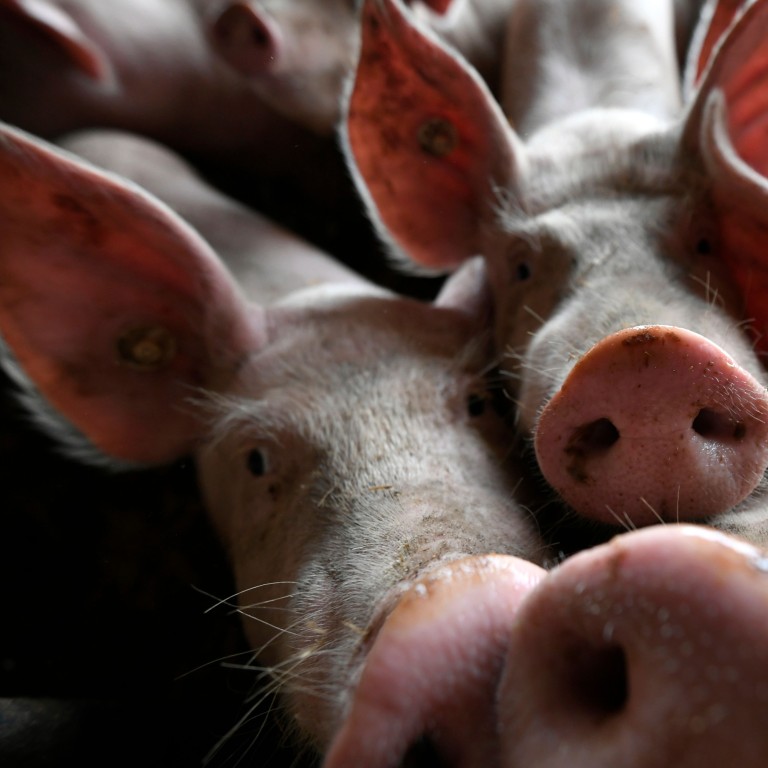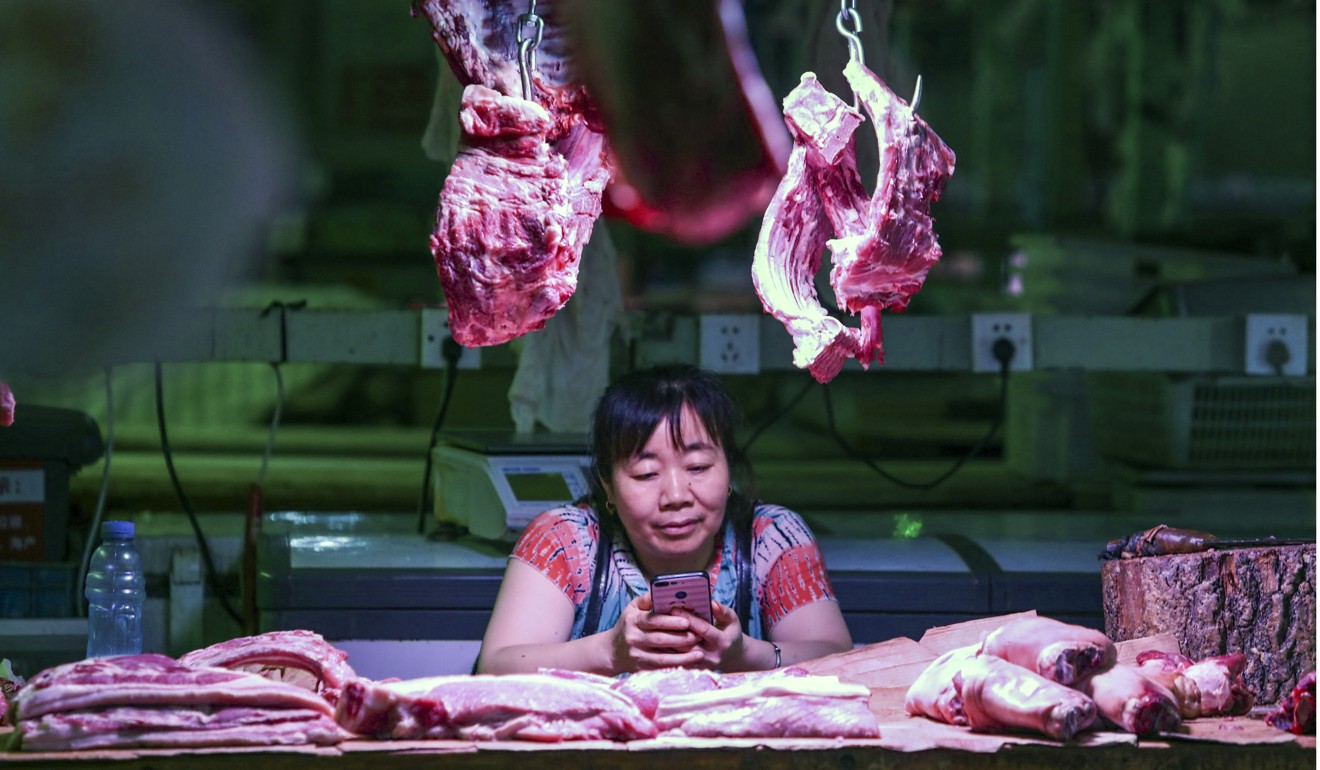
In the Philippines, African swine fever threatens a national culinary obsession
- Filipinos have had a centuries-long love affair with pork, devouring all parts of the pig from the trotters to the skin, and this runaway consumption has made the country a pork power in the global market
- But the industry is now under threat from African swine fever, with many diners refusing to eat it, despite authorities assuring Filipinos the meat is still safe
The carcasses were almost certainly those of pigs infected and killed by the virus and then dumped from upstream piggeries or washed by heavy rains into the river from shallow burial pits.
Veterinary officials later buried most of the retrieved carcasses deep underground, keeping a few for testing.
On Monday, Ronnie Domingo, the Bureau of Animal Industry’s director, said the spread of ASF in the Philippines had now reached the level of an outbreak.
The virus affects only pigs – humans are immune. But that is possibly the only good thing about it. There is no vaccine and mortality approaches 100 per cent. It spreads easily, through contaminated material fed to pigs, as well as ticks and any other objects likely to carry infection, such as clothes, utensils and furniture. Pigs afflicted by the haemorrhagic disease become listless, suffer high fever, lose their appetite, bleed internally and die within two to 10 days of infection.

For many Filipinos, breakfast might be fried garlic longanisa (sausage) or tocino (sweet-cured pork), while lunch could be pork adobo, and their afternoon merienda, or snack, the pork blood stew dinuguan. Dinner might be sweet and sour pork, or sinigang sour soup with – of course – pork.
China’s ‘heartbroken’ pig farmers torn apart by pork price spike and African swine fever
According to the Bureau of Animal Industry (BAI), a Filipino typically eats about 15kg of pork a year, higher than the average consumption in the rest of the world. Filipinos will eat practically all parts of a pig, from its trotters to its ears (the famous spicy dish called sisig) and its skin (served as crispy chicharon).
Businessman Elpidio Que of Vigan city told the South China Morning Post he loved eating pork – “especially before my bypass operation”.

The consumption makes the Philippines a pork power in its own right. In a Senate resolution, Senator Ralph Recto pointed out that the country produced almost 2.3 million metric tonnes, making it the world’s eighth biggest pork producer by volume. He said that in 2015 Filipino families bought 101 billion Philippine pesos worth of fresh pork. According to the BAI, the country’s national herd came to 12.78 million pigs.
All of this is threatened by African swine fever. The BAI noted that “historically, the country is free from ASF”, but an outbreak would cause “great economic loss”.
China aims to become self-sufficient in pork production despite African swine fever
With the Department of Agriculture announcing it tested 20 pig samples and found 14 infected, there have been media reports of pork prices dropping, along with television news features on pork sellers in Manila’s markets saying their products are perfectly safe.
Health secretary Francisco Duque III said “ASF is not a threat to human health”. He pointed out that “as long as pork is bought from reliable sources and is cooked thoroughly, pork is safe to eat”.
Michelle Basilio, branch manager of a famous lechon shop, Elar’s, told the Post that “our sales went down a bit” but that the chain strictly controlled its products.

“We have our own piggery, we make sure everything is checked by the bureau of agriculture and National Meat Inspection [Service]. They give as a permit per day for a specific number of orders per day.”
She said Filipinos loved eating lechon because “it symbolises a family gathering, it’s about getting together”.
Even if, in the midst of an outbreak, properly cooked pork is safe to eat, many do not want to take any chances. According to Que, although the ASF story may have been “drummed up by the media, of course I get scared eating pork too, even if there’s no report of a person who died eating it”.
Is the world’s biggest pork consumer ready for substitutes, as African swine fever burns a path through China’s hog herds?
The government had been bracing for the virus’ arrival for a year. According to the BAI, “prevention depends on stringent import policies, early detection and strict biosecurity”. The Department of Agriculture had already temporarily banned importing pigs and pork products from a long list of countries that included China, Germany, Belgium, Vietnam, Hungary and the Czech Republic.
Just last month, despite reports it had started culling pigs in various areas, the department denied there was any outbreak of the disease and refused to reveal where the culling was taking place.
But John Edward Mendoza, a restaurateur and hog breeder, told the Post he suspected “the epidemic was started from backyard-raised pigs eating pig swill obtained from a hotel in Metro Manila”, and that the swill included tainted pork meat from China. He said he and others had asked the government to stop importation of pork “for the moment”.

Mendoza said 65 per cent of the piggery industry was made up of backyard operations and 35 per cent was farm piggeries each with between 100 and 25,000 animals.
“At our breeder farms, we adhere to the highest standards of sanitation” with serological tests done on pigs, Mendoza said. His farms were located in areas far from other pig farms, and trucks and outsiders were no longer allowed entry, he added. At his restaurant, staff explained that the pork served came from the owner’s own hog farm and the pigs were tested daily for swine fever.
With hogs costing 10,000 Philippine pesos each, the virus can hit small pig farmers hard. Senator Recto warned that the government needed to have contingency plans.
“I think a study group should be convened to assess the financial fallout in case of a worst-case scenario,” he said. “How to mitigate financial disaster is, I think, an unexplored area.”

